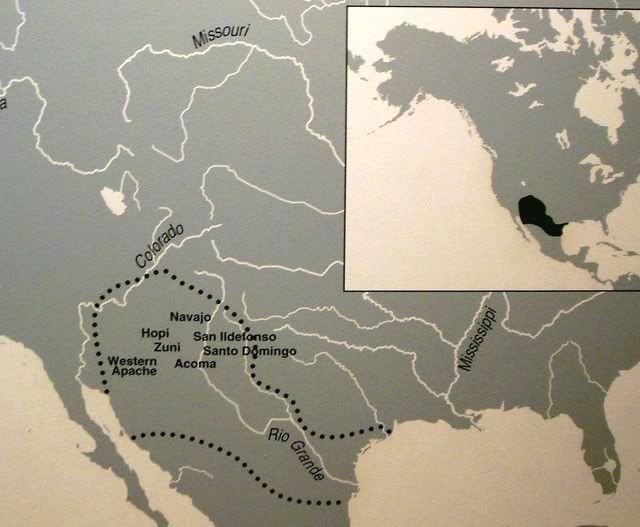
The Southwest Culture Area is a culturally diverse area. Geographically it covers all of Arizona and New Mexico and includes parts of Colorado, Nevada, Utah, and Texas as well as parts of the Mexican states of Sonora and Chihuahua. Much of this area is semi-arid; part of it is true desert (southern Arizona); and part of it has upland and mountain ranges which support conifers. Culturally, the area can be divided into four basic cultural traditions: Pueblo, Athabascan, Piman, and Yuman.
In northern Arizona and New Mexico there are several Indian tribes who have traditionally lived in compact villages. The Spanish used the word pueblo which means “town” in referring to these people. The Pueblo people are not a single cultural tradition, but are in fact several distinct cultures. They share some features – farming, housing – and are very different in others.
Around 1400 CE a new group of people began to enter the Southwest. These Athabascan-speaking people – the Navajo and the Apache – migrated from the area north of Edmonton, Alberta.
The Sonoran desert of Arizona and Sonora is the home of a number of Piman-speaking groups, primarily the Tohono O’odham (Papago) and Akimel O’odham (Pima).
The area along the Colorado and Gila Rivers was the traditional home to a number of Yuman-speaking tribes
Pottery:
The pottery traditions of the Southwestern Pueblos are well-known to museums, art collectors, and others. For many centuries, Pueblo people have made and used a wide variety of pottery containers, including bowls, jars, cups, ladles, and canteens. Pueblo pottery is traditionally formed with a coil technique in which coils of clay are circled around the base of the pot to form the walls of the vessel. Shown below are some examples of Southwestern pottery on display at the Portland Art Museum.
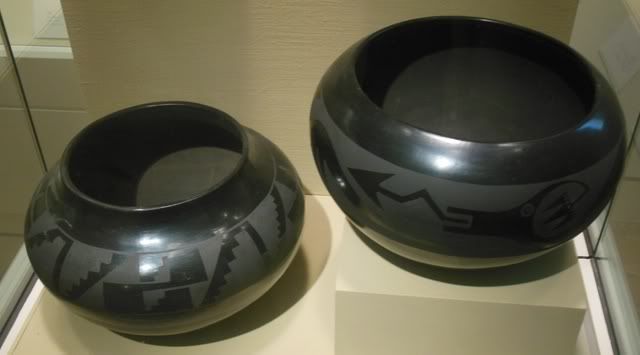
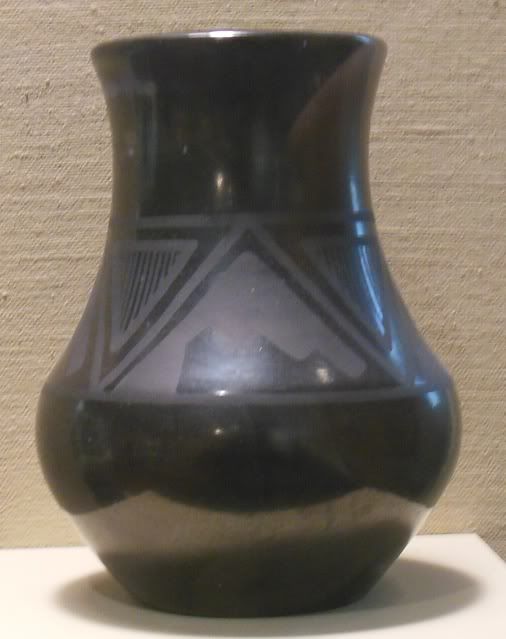
Perhaps the best known Pueblo pottery is María Martínez of San Ildelfonso Pueblo. Examples of her black-on-black pottery are shown above.
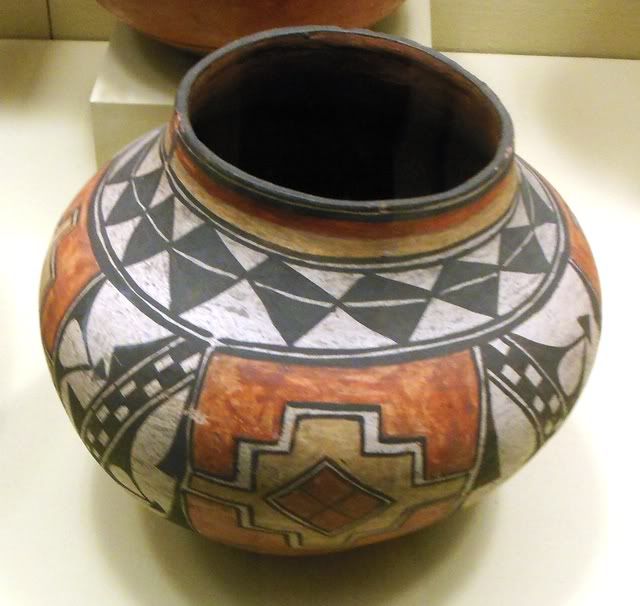
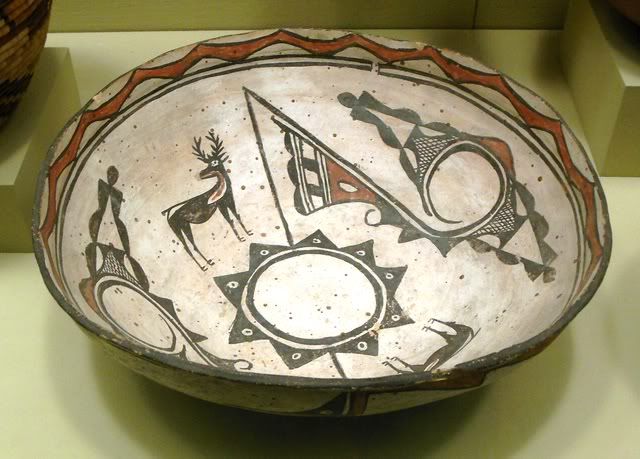
Basketry:
All of the Indian nations in the Southwest produced basketry.
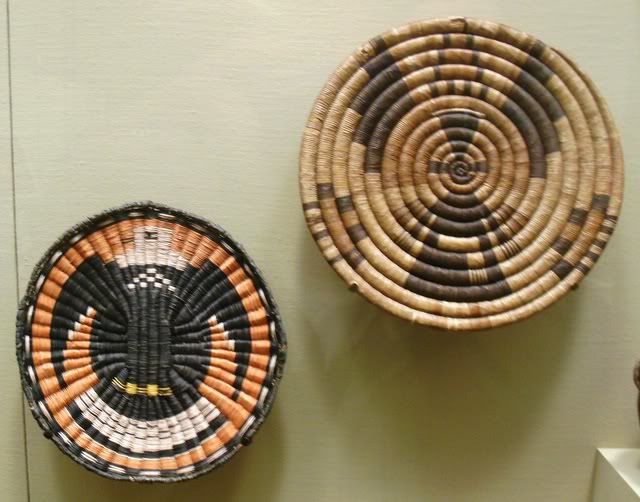
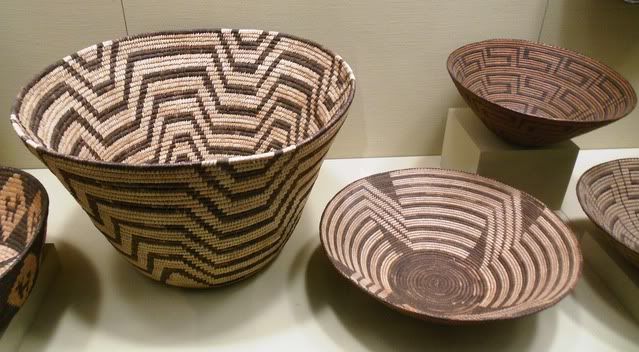
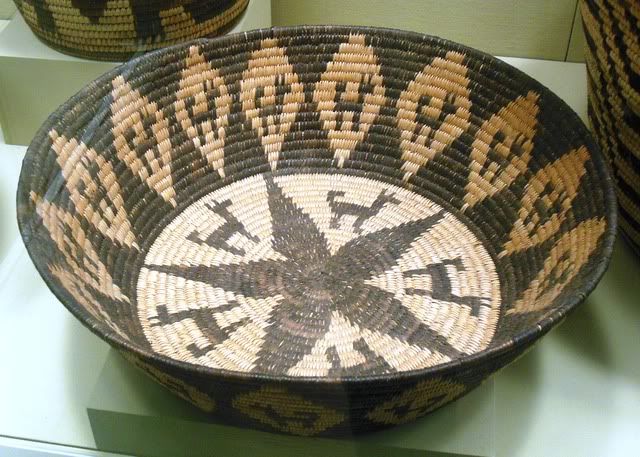
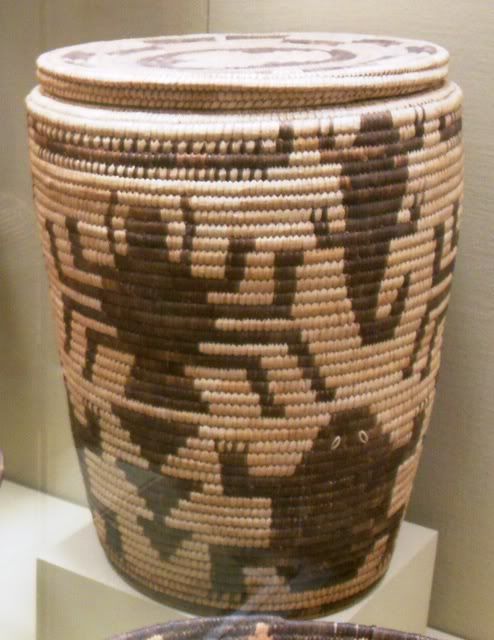
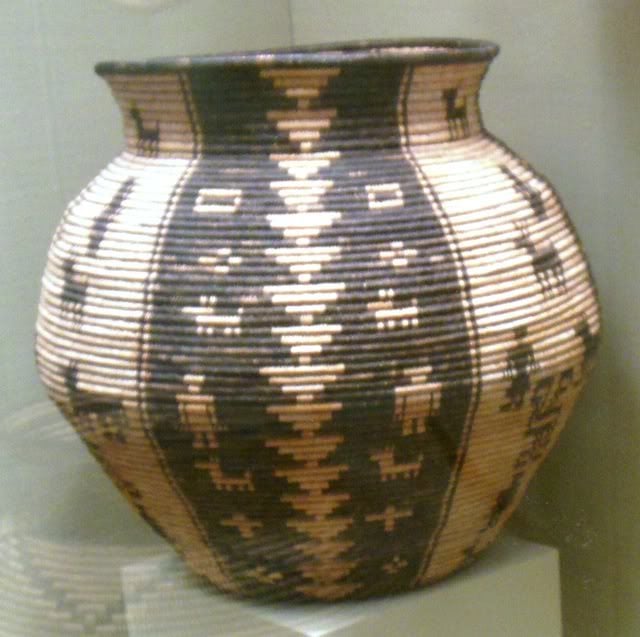
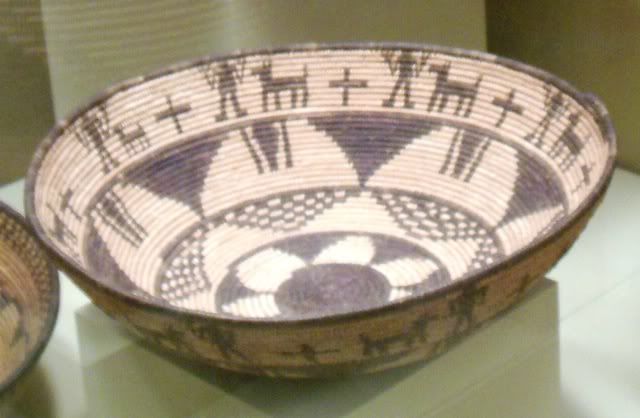
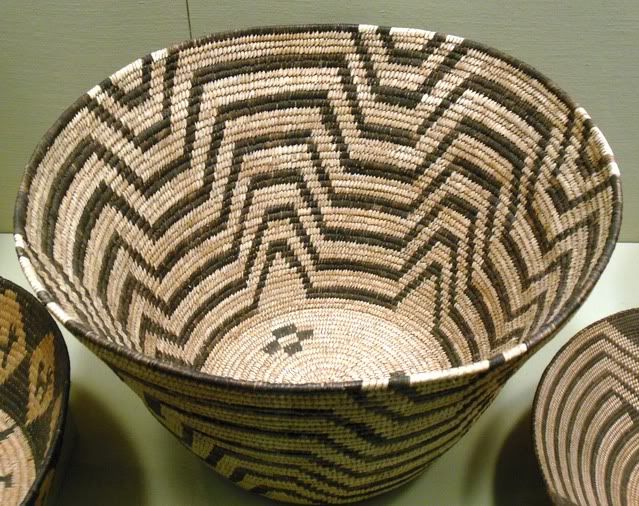
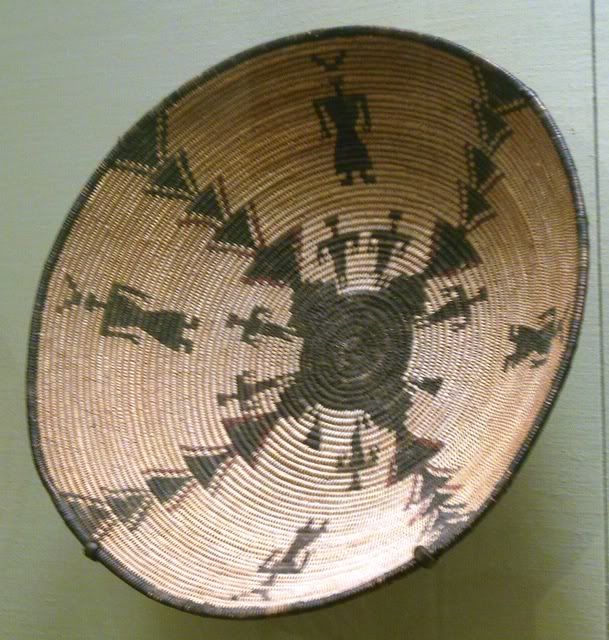
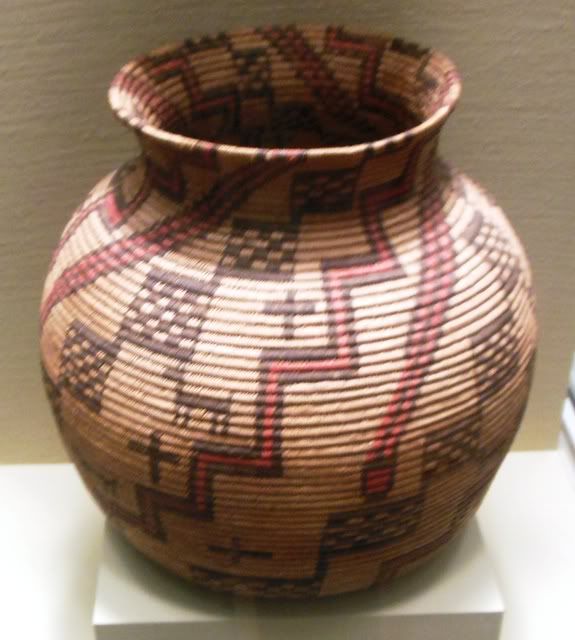
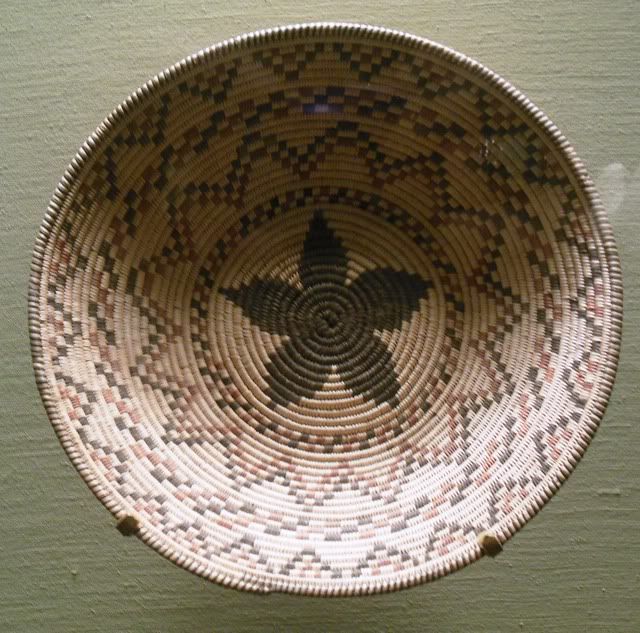
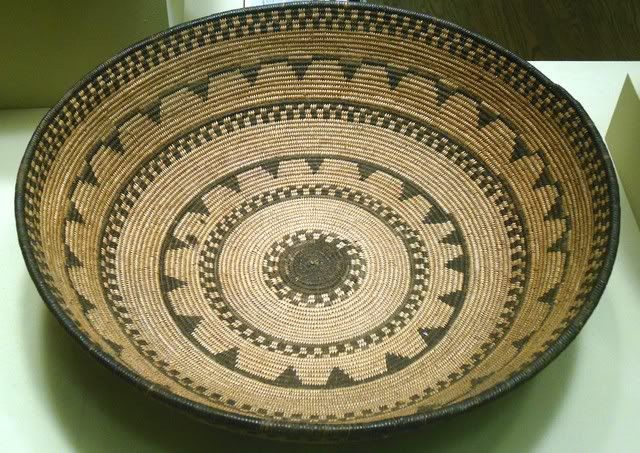
Carvings:
During the past century, the carving of katsina “dolls” called tihu by the Hopihas become a major art form which is well-recognized in the art world. These are carved by relatives of little Indian girls and presented to these children at Katsina dances to teach the children the features and meaning of the Katsinas. Traditional carvers feel that those who carve the katsina “dolls” should be able to speak Hopi because knowledge of the language is required to truly participate in Hopi ceremonies. Without full participation in Hopi ceremonies, the carvers cannot know the true spiritual intent of the katsina. Some of the carvings displayed in the Portland Art Museum are shown below.
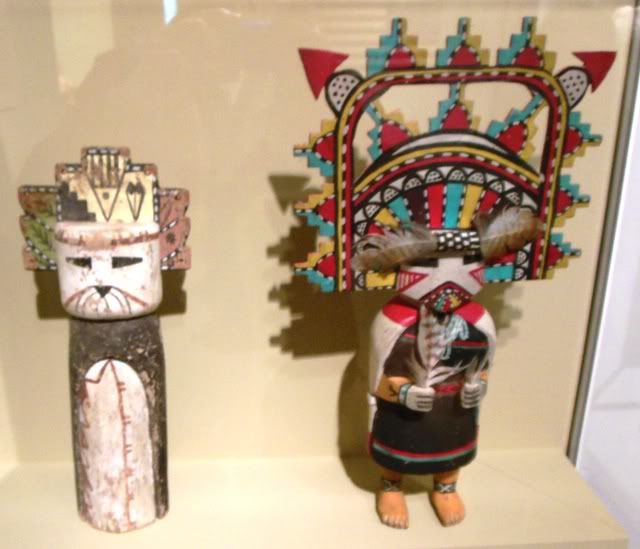
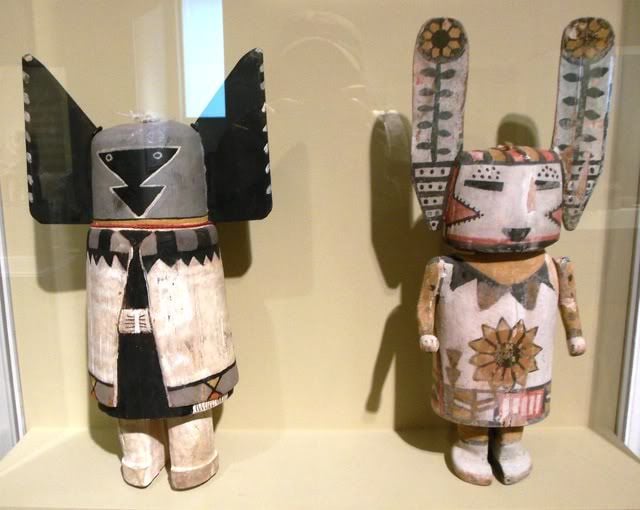
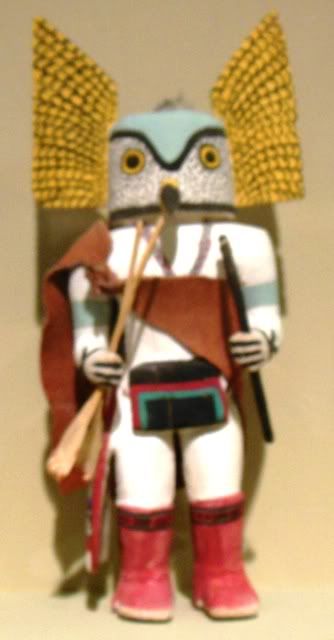
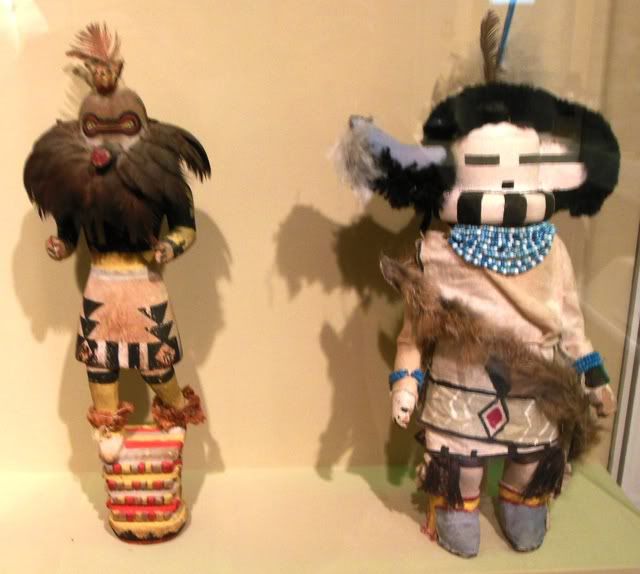
Note: while the term “kachina” is commonly used, the tribe prefers the designation “katsina.”

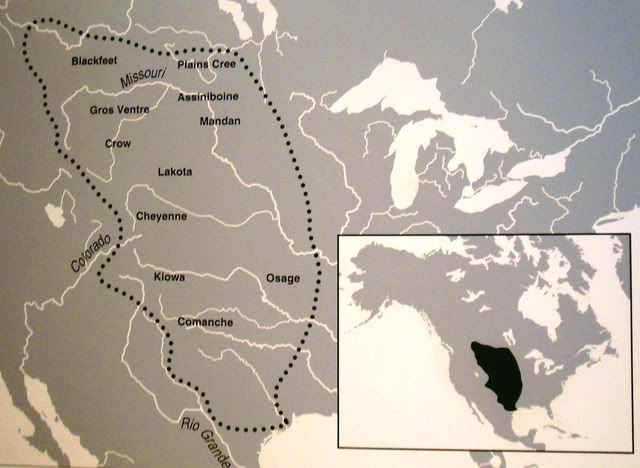
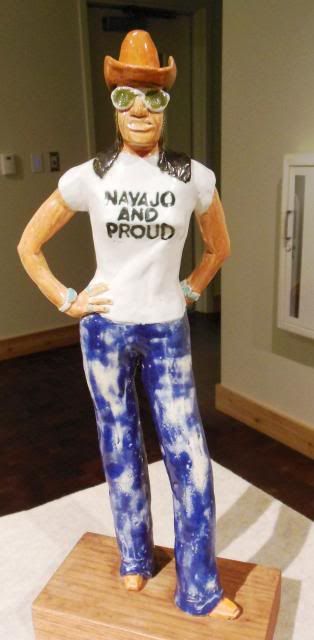
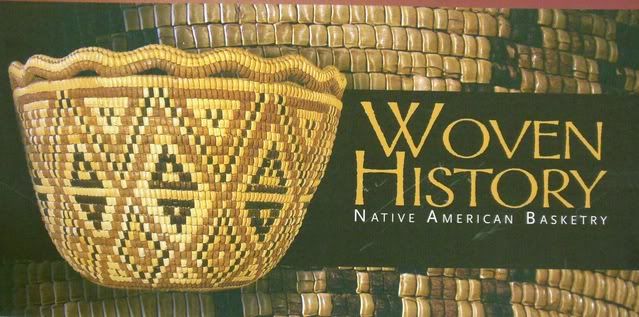
Leave a Reply